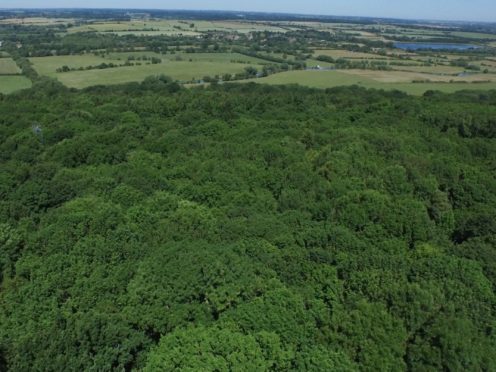New laser scanning technology is being used to “weigh” trees, in a project which could help more accurately assess the role forests can play in tackling climate change.
Lasers are used to collect hundreds of thousands of points of data a second from the canopy, which are processed to build a three-dimensional picture of the tree revealing its structure and its volume, which allows estimates of mass.
For example, one sycamore tree in Wytham Woods near Oxford was found to have nearly 11km (6.8 miles) of branches, double that of much taller tropical trees measured as part of the study, the researchers said.
It is hoped the information will give a more accurate picture of the amount of carbon absorbed by forests, as part of efforts to reduce greenhouse gases, as well as help predict how trees might respond to climate change.
Dr Mat Disney, from University College London, who pioneered the approach, said that previously tree mass could only be measured by chopping it down and weighing it, which kills the tree, or estimating it manually from the ground.
But he said: “Getting the height of the tree and the volume of the crown are really hard to do from the ground, particularly big tropical trees when you can’t see the top of them.”
The new approach, which the scientists have used to analyse trees in places ranging from Gabon and Borneo to the UK and northern California, accurately captures the fine scale 3D structure of the tree.
The technology, which costs between £75,000 and £150,000, can pinpoint branches to an accuracy within millimetres from a range of nearly a kilometre (0.6 miles).
This can tell researchers about the tree’s “life history”, including its survival strategy, how it grows and competes with other trees, and because the tree does not have to be cut down, its development can be monitored over time.
Estimating the mass of trees from their volume could help assess more accurately how much carbon is being stored in forests, and consequently the value that should be paid to countries not to cut them down.
Dr Disney said: “How heavy a forest is tells you how much carbon it’s got in it, as around half the weight of a forest is made up of carbon.”
Forests are earmarked to provide around a quarter of greenhouse gas emissions reductions under international efforts to cut climate change, but estimates of how much carbon is stored in tropical forests could be as much as 45 billion tonnes out, the researchers said.
There are also concerns about how forests could be affected by the changing climate, and the analysis could help predict the impacts of rising temperatures on trees.
“Going across the tropics, across different climate gradients, temperatures and rainfall, we are able to compare in very fine detail the structural impacts, why are trees slightly taller here, or have different crowns, even though they are similar kinds of forest.
“Understanding what these variations are is crucial to predicting how these trees are likely to respond to things like reduced rainfall and higher temperatures,” Dr Disney said.
The research by scientists at University College London and the universities of Oxford, Sonoma State, Ghent and Wageningen, is published in the Royal Society Interface Focus journal.










